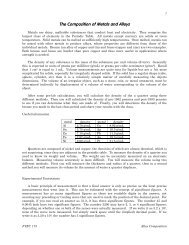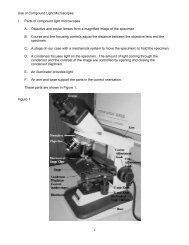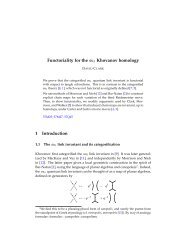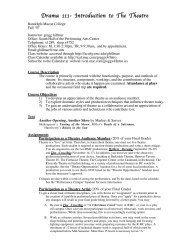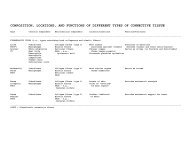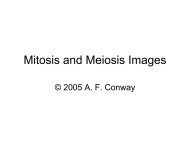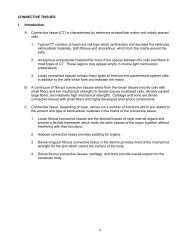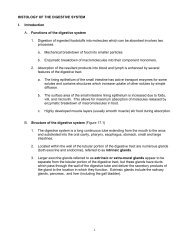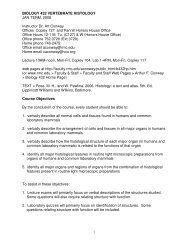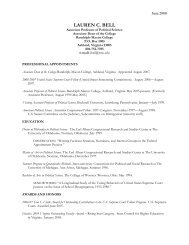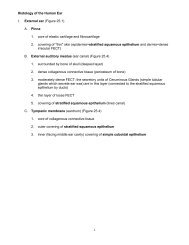Histology of Sensory Receptors I. Introduction A ... - Faculty.rmc.edu
Histology of Sensory Receptors I. Introduction A ... - Faculty.rmc.edu
Histology of Sensory Receptors I. Introduction A ... - Faculty.rmc.edu
Create successful ePaper yourself
Turn your PDF publications into a flip-book with our unique Google optimized e-Paper software.
III. Myoneural <strong>Receptors</strong><br />
A. Golgi tendon organs<br />
1. Golgi tendon organs are small spindle-shaped aggregates containing several bundles <strong>of</strong><br />
collagen fibers with free nerve endings wrapped around the collagen fibers. The whole<br />
complex is surrounded by a thin capsule <strong>of</strong> flattened fibroblastic cells.<br />
2. Golgi tendon organs occur in the tendons <strong>of</strong> skeletal muscles and respond to tension in<br />
the tendon.<br />
B. Neuromuscular spindles (muscle spindles) (Figure 11.12)<br />
1. Neuromuscular spindles contain two types <strong>of</strong> modified skeletal muscle cells which have<br />
organized my<strong>of</strong>ibrils in their distal ends but contain few organized my<strong>of</strong>ibrils in their<br />
central regions (where their nuclei are located).<br />
a. Nuclear bag fibers contain nuclei clumped in the center <strong>of</strong> the cell.<br />
b. Nuclear chain fibers contain nuclei in a row in the center region <strong>of</strong> the cell.<br />
(1) Primary sensory nerve endings spiral around the central region <strong>of</strong> both types <strong>of</strong><br />
modified cells.<br />
(2) Secondary sensory nerve endings are attached as highly branched "flower<br />
spray" endings on the surface <strong>of</strong> the nuclear chain fibers on both ends just<br />
distal to the central (nuclear) region.<br />
(3) Both fiber types have motor synapses (gamma efferent) on both distal regions<br />
(where the my<strong>of</strong>ibrils are highly organized) which cause the cell ends to<br />
contract, stretching the sensory receptor region in the nuclear region <strong>of</strong> the cell<br />
and stimulating the receptor.<br />
(4) The receptor complex is surrounded by a capsule <strong>of</strong> flattened cells continuous<br />
with the Schwann cells <strong>of</strong> the peripheral nerve supplying the muscle and the<br />
perimysium (the part <strong>of</strong> the connective tissue framework <strong>of</strong> the muscle which<br />
surrounds each bundle <strong>of</strong> muscle cells and the part which attaches to the<br />
tendon at each end <strong>of</strong> the muscle) <strong>of</strong> the muscle. The modified muscle cells in<br />
the receptor are attached to the capsule at their ends and are therefore<br />
attached to the perimysium <strong>of</strong> the muscle.<br />
2. Neuromuscular spindles monitor tension and stretch in the skeletal muscle since either<br />
force pulls on the perimysium which pulls on the muscle cells in the receptor.<br />
2



